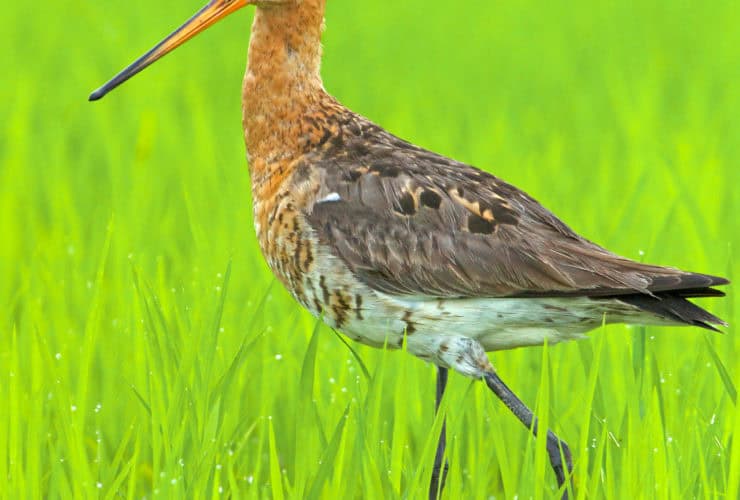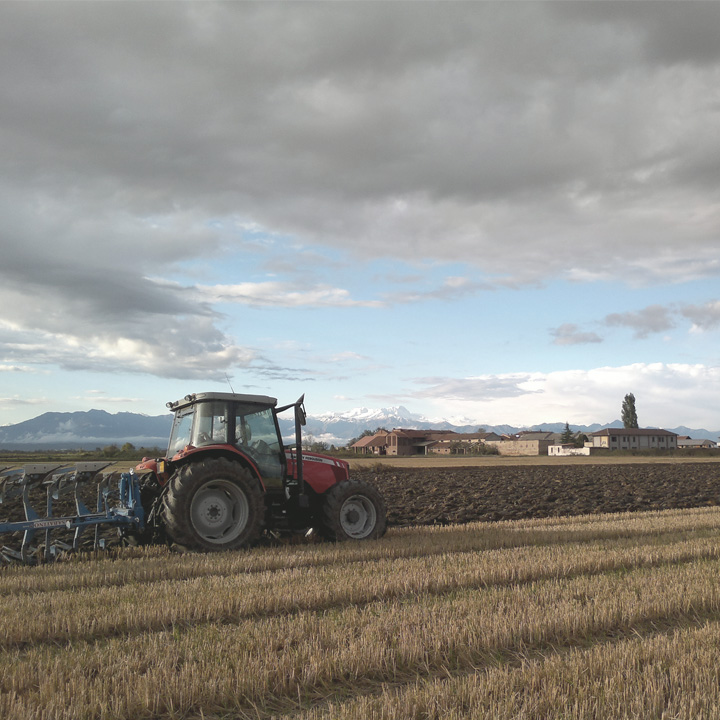Cascina Oschiena
Webinar – Rice production and Sustainable management of the agro-ecosystem The Cascina Oschiena case study 19th of June 2019
Cascina Oschiena is one of the oldest farmsteads in the province of Vercelli, rice has been cultivated here since the XVI century. In 2008 Alice Cerutti, 37year old farmer, took on the commitment of running Cascina Oschiena. This was the conclusion of my interview with Alice Cerutti, owner of Cascina Oschiena, after the cooking show with Anna Maria Pellegrino in Gourmandia. Alice and Simone are two amazing guys, capable of brave decisions, guided by the values they believe in, even at the expense of their personal profit. The close relationship between Cascina Oschiena and Friend of the Earth is long-lasting. The different peculiarities of this excellent small family farmhouse hit the nail on the head. It is located in Crova, a small town south of Vercelli, into the hearth of that “plain of rice” between Turin and Milan which, since the end of the 15th century, has represented one of the worldwide renowned.
Cascina Oschiena Series

“My love for the Alps is so great… This passion for the mountains was handed down to me when I was just 12 years old, by an old school teacher of mine… who loved to organize trips and excursions in the open air to let us students discover the magic of the mountains”
–Giovanni Crivello, owner of Cascina Fontanacervo dairy in Villastellone, Turin Italy.
This passion for the land extended far beyond Giovanni’s adolescence. In 1978, as an adult, Giovanni and his two sisters and two brothers took over the family farm from their father and grandfather–land that has been in their family since the 17th century and farmed with traditional methods. Giovanni’s brothers manage fields on the land for animal fodder and stables.
The Crivello siblings began to introduce important innovations with the vision of evolving the farm into a full-fledged dairy farm.
By the 1980s and 90s, Cascina Fontancervo’s first cheeses began to appear on the market, cheeses that embodied a blend of local cheesemongers’ traditions and new production techniques.
First came “Robiola”, followed by “Toma Fontanacervo” and “Toma La Granda”–the last two being new additions to our Rogers Collection catalogue. More on those in a minute!
And finally, in the early 2000s, Cascina Fontancervo made important upgrades to their dairy facility, bringing the dairy farm to its present structure and size.
All of the milk used for the production of their cheeses–as well as fresh milk, yogurt and desserts–is produced internally in their stables. Cascina Fontanacervo maintains a low-density herd, with a lower average production per animal. They also ban chemical ingredients, in particular thickeners, flavorings and preservatives.
The farm’s 650 cows, both Italian Frisian and Dansk Jersey, are fed only with fodder and cereals grown on their land in a natural way–the fields are fertilized with their cows’ own manure, making Cascina Fontancervo self-sufficient and closing the loop of production from fodder to cheese.
“[This means a] true environmental sustainable project, one of my dreams when I took over the farm together with my brothers,” says Giovanni.
We at Rogers Collection, feel exceptionally lucky to be the only U.S. importer of two Cascina Fontanacervo’s cheeses: La Granda and Toma Fontanacervo.
Cascina Oschiena Del
And as with so many things, the opportunity to do so came by way of a connection and kinship between people. Only a year ago, Cascina Fontancervo was only exporting small quantities of cheese to Germany. Giovanni had plans to expand to European markets, but, he says, “I never thought I could land overseas one day!”
But in May 2019, Carrie Blakeman (managing director here at Rogers Collection) heard about Giovanni’s farm while she was in Florence for Taste, a yearly food show featuring premium products. Carrie was introduced to Fontancervo through Savor Piemonte–an initiative promoted by Torino Chamber of Commerce designed to “highlight the special producers of the area who are dedicated to preserving the distinctive flavors of their land through…their careful production methods.”
Carrie decided to take a trip to the farm, to meet Giovanni and to taste the cheeses.
“From that meeting…something extremely stimulating was born,” says Giovanni.
“We immediately liked each other and now I’m fully committed in facing this new challenge. I’m eager to make my cheeses known and appreciated in the United States, thanks to the fact that a team of professionals such as Rogers’ decided to bet on me.”
Well, we agree, Giovanni! These relationships are the bedrock of our company.

Of their visit and a group cheese tasting, Carrie says, “I’ll never forget the look on Giovanni’s face, sitting in a circle in the shade…he was really quiet when this wheel of cheese came out. His eyes popped open and he had a wide smile. ‘This is…Fontancervo,’ he said. I fell in love with it instantly.”
Cascina Fontancervo is best described in three words: local, sustainable and qualitative.
Local as the cows are fed with fodder grown in the farm; sustainable, as the fields are fertilized with their own slurry, cultivating local grass without any chemical fertilizers; qualitative, because this is the sixth consecutive year the farm is awarded the Slow Food Masters of Taste award.
Let’s start with La Granda. So, what’s in it, to start: high-quality pasteurized cow’s milk, calf rennet, salt and milk enzymes.
La Granda is such a significant part of the region that in the Piedmont dialect, the province of Cuneo is familiarly called “La Granda” after this cheese tradition.
“One of the products I appreciate the most is La Granda cheese,” says Giovanni.
Aged for 60 days, this cheese is characterized by the sweetness and elasticity of its paste. Extremely balanced and versatile, La Granda is equally at home as an aperitif as it is ending a meal perhaps with a few light beers or glass of wine like a sparkling or white wine as well as light red wines like Erbaluce di Caluso Spumante DOCG.
Ok, truth be told, it works well not only at the beginning and end of a meal but right in the middle, too. Cascina Fontancervo suggests cubes of La Granda mixed with boiled Carnaroli rice by Cascina Oschiena (a sustainable rice farm also in Piedmont. We carry their products, too. Check out this link for their full story!), chopped vegetables and extra virgin olive oil to get a fresh rice salad, perfect for summer.
And bonus! It’s a great melting cheese. Try it with stuffed potatoes, cheese fondue and lasagne.
Next is Toma Fontanacervo. As the company says, this cheese is “born for fun” and made for “all cheese lovers.” Aged four to six months, this cheese, like some wines, improves with time, holding a delicate, fragrant and floral aroma and an ivory paste that tends to pinstripe. Again, like La Granda, great as an aperitif, or paired with red wine, and a good melter–try it in a risotto made with Cascina Oschiena’s Arborio rice.
For a lighter dish, toss cubes of Toma Fontanacervo with sliced celery, roughly chopped roasted hazelnuts (try Piedmont IGP hazelnuts by Tastelanghe), Prosecco DOCG vinegar (we suggest Acetificio Varvello) and extra virgin olive oil.

“I was always intrigued by how different types of products are derived from raw materials such as with milk and cheese,” says Giovanni. ”Our strong point is precisely the raw material: milk. We do not choose the best milk to make cheese, but rather, we choose the best grass to produce the milk for further processing.”
Written by Leska Tomash